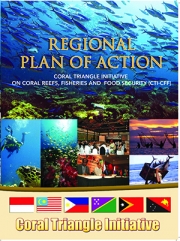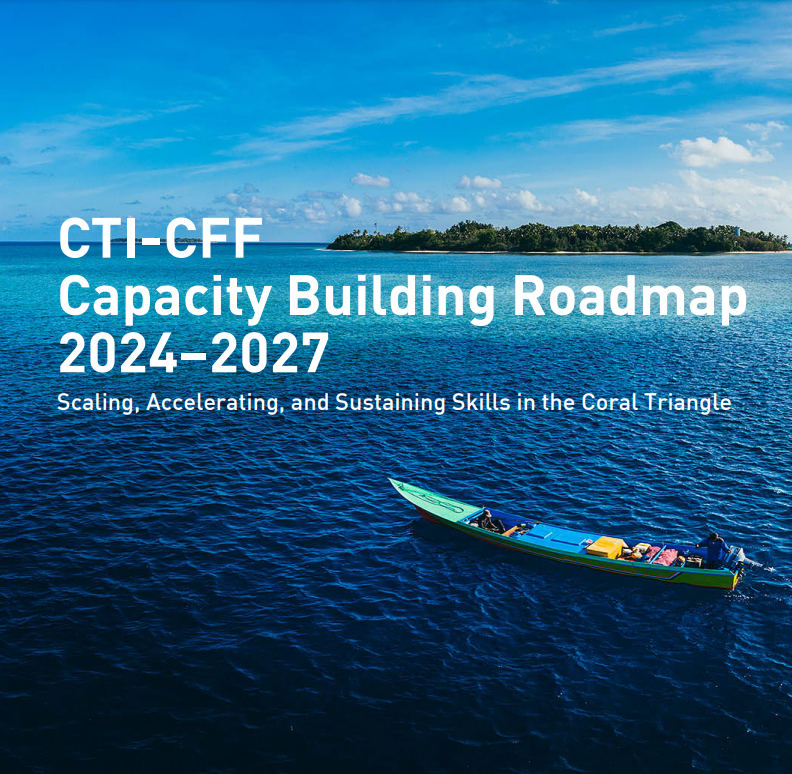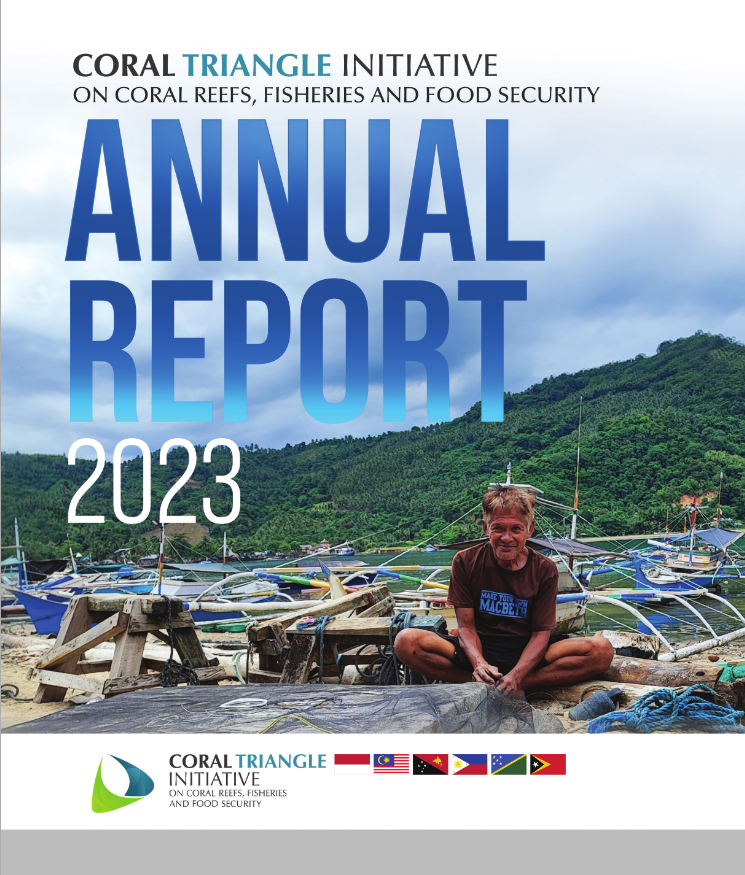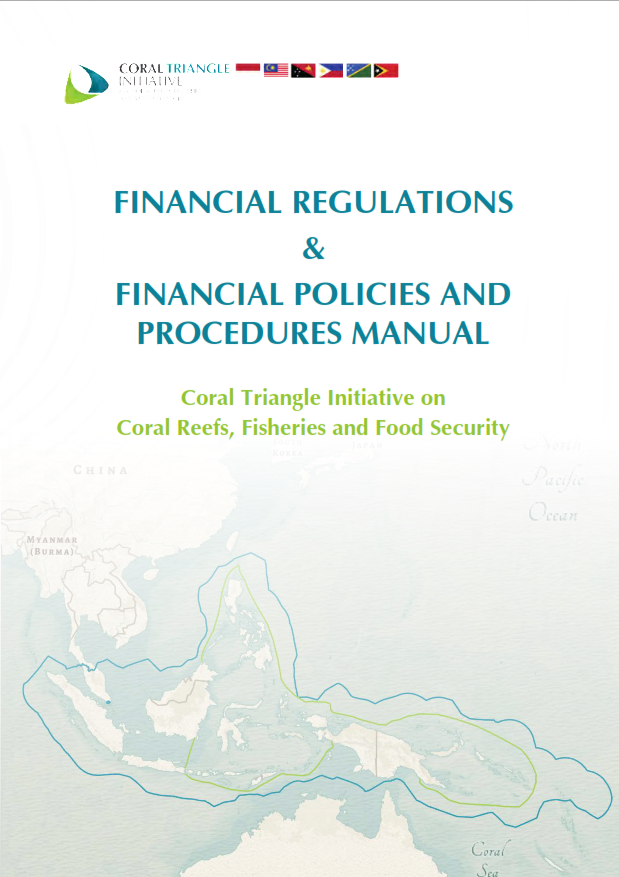CTI-CFF Regional Plan Of Action (RPOA)
| # | Documents | Filesize |
|---|

- Subject:
- RPOA
- Type:
- Policies and Agreements
The Regional Plan of Action (RPOA) is guided by the following Guiding Principles:
-
Principle #1: CTI should support people-centered biodiversity conservation, sustainable development, poverty reduction and equitable benefit sharing. CTI goals and actions should address both poverty reduction (e.g. food security, income, and sustainable livelihoods for coastal communities) and biodiversity conservation (e.g. conservation and sustainable use of species, habitats, and ecosystems).
-
Principle #2: CTI should be based on solid science. Solid science and data on fisheries, biodiversity, natural resources, and poverty reduction benefits should form a basis for establishing goals and implementation activities. In the absence of conclusive scientific information, the precautionary principle/approach will apply.
-
Principle #3: CTI should be centered on quantitative goals and timetables adopted by governments at the highest political levels. Concrete, quantitative goals should be established that are measurable and linked to specific and realistic timetables for achievement. Specific milestones should be adopted that define progress toward achieving these goals. Goals should cover both national and regional levels. Indicators should be adopted for the targets and timeframes.
-
Principle #4: CTI should use existing and future forums to promote implementation. Relevant existing forums should be used to implement actions under the CTI. These include, for example, tri-national commissions on the Sulu Sulawesi Seas (SSME) and Bismarck Solomon Seas (BSSE); APEC; ASEAN; Secretariat for the South Pacific Regional Environment Program (SPREP); the Brunei, Indonesia, Malaysia and Philippines East ASEAN Growth Area (BIMP-EAGA); Arafura and Timor Seas Experts Forum (ATSEF); and Program for the Environmental Management of the Seas of East Asia (PEMSEA).
-
Principle #5: CTI should be aligned with international and regional commitments. Goals and activities should be supportive of international and regional commitments already made under relevant legal instruments and multilateral processes (e.g., SSME, Convention on Biological Diversity, Millennium Development Goals, ASEAN, APEC, Pacific Islands Forum, CITES, UNCLOS, Regional Fisheries Management Organizations, and UNFCCC).
-
Principle #6: CTI should recognize the transboundary nature of some important marine natural resources. Goals / activities should take into account the transboundary nature of some marine resources and threats (land- and sea-based) to these resources (e.g., shared fish stocks, migratory sea turtles and marine mammals, IUU fishing, live reef fish trade). Trans-boundary activities under CTI should not prejudice recognized boundaries or ongoing negotiations on legal boundaries between nations.
-
Principle #7: CTI should emphasize priority geographies. Goals / activities should help focus resources and investments on priority geographies (e.g., large-scale “seascapes” requiring prioritized attention, identified through ecoregional assessment processes).
-
Principle #8: CTI should be inclusive and engage multiple stakeholders. Multiple stakeholder groups should be actively engaged in the CTI, including other national governments, local governments, NGOs, private sector companies, bilateral donor agencies, multilateral agencies, indigenous and local communities, coastal communities, and the academic and research sector.
-
Principle #9: CTI should recognize the uniqueness, fragility and vulnerability of island ecosystems.
Overarching Commitments
- Designate the sustainable management of marine and coastal resources as a high and urgent ongoing priority on our national agendas;
- Mobilize high-level public and private sector leadership;
- Achieve enhanced regional collaboration to address important regional problems;
- Implement needed economic, policy and legal reforms;
- Establish a system of sustainable funding and orient these financial resources toward achievement of the CTI Regional Plan of Action;
- Achieve a rapid improvement in institutional and human capacity;
- Lead effective, highly participatory multi-stakeholder alliances;
- Integrate conservation, management and development; and
- Promote public / private partnerships.
RPOA Goals and Targets
-
Goal 1: “Priority Seascapes” Designated and Effectively Managed
- Target 1: “Priority Seascapes” Designated, with investment plans completed and sequenced
- Target 2: Marine and Coastal Resources within all “Priority Seascapes” are being sustainably managed
-
Goal 2: Ecosystem Approach to Management of Fisheries (EAFM) and other marine resources fully applied
- Target 1: Strong legislative, policy and regulatory frameworks in place for achieving an Ecosystem Approach to Fisheries Management (EAFM)
- Target 2: Improved income, livelihoods, and food security in an increasingly significant number of coastal communities across the region through a new sustainable coastal fisheries and poverty reduction initiative (“COASTFISH”)
- Target 3: Effective measures in place to help ensure exploitation of shared tuna stocks is sustainable, with tuna spawning areas and juvenile growth stages adequately protected.
- Target 4: A more effective management and more sustainable trade in live-reef fish and reef-based ornamentals achieved.
-
Goal 3: Marine Protected Areas (MPAs) established and effectively managed
- Target 1: Region-wide Coral Triangle MPA System (CTMPAS) in place and fully functional
-
Goal 4: Climate Change Adaptation Measures Achieved
- Target 1: Region-wide Early Action Plan for Climate Change Adaptation for the near-shore marine and coastal environment and small island ecosystems developed and implemented
- Target 2: Networked National Centres of Excellence (COEs) on Climate Change Adaptation for marine and coastal environments are established and in full operation
-
Goal 5: Threatened Species Status Improving
- Target 1: Improved status of sharks, sea turtles, seabirds, marine mammals, corals, seagrass, mangroves, and other identified threatened species



